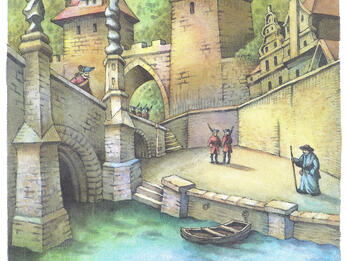
Sample Sources
The sources below are those contained in our three curated collections—covering themes of Passover, Gender Roles, and Holocaust Resistance. They represent a fraction of the thousands of sources that will be available when the full site launches in 2024.

Promissory Note on Clay Tablet
Promissory note on clay tablet, Judahtown, Babylonia, 550 BCE. This promissory note, written in cuneiform script, has an endorsement by the debtor (named Shelemiah), written on the lower edge, in West…

City Plan Incised on Clay Tablet
City plan incised on clay tablet, Babylonia. The command in Ezekiel 4:1 to “incise Jerusalem” on a brick may have meant to incise a map of it, like this map of the Babylonian city Nippur (near where…
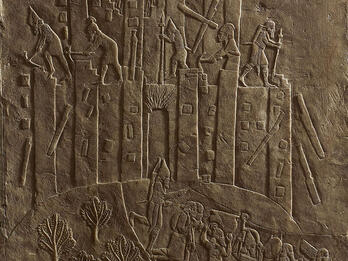
Destruction of City and Capture of Inhabitants in Assyrian Relief
Destruction of city and capture of inhabitants in Assyrian relief, from the palace of Assurbanipal (reigned 669–627 BCE), Nineveh. Assyrian soldiers destroy and burn the Elamite royal city, with…
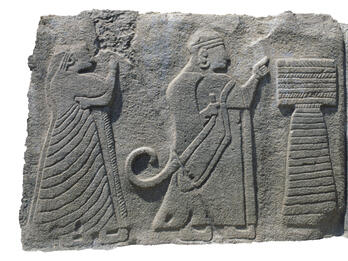
Hittite Couple Sacrificing to Bull
Hittite couple sacrificing to bull, Alaça Hüyük, Turkey. In this relief, a king and queen, or perhaps a priest and priestess, stand at an altar and make an offering before a bull. On the symbolism of…
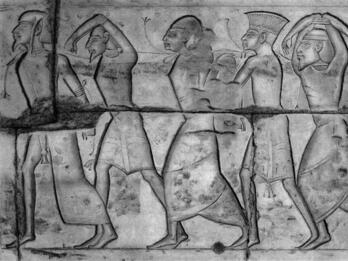
Philistine (?), "Asiatics," and Other Captives
Philistine (?), “Asiatics,” and other captives, Medinet-Habu, Egypt, 12th century BCE. The relief depicts captives of Ramses III (reigned 1187–1156 BCE). The second man from the right is one of the…
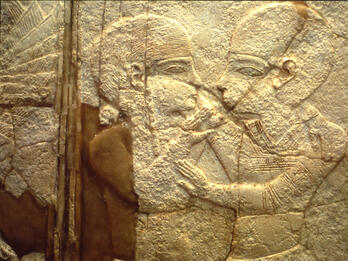
Embracing Couple in Ivory Inlay
Embracing couple in ivory inlay, Ugarit, 14th century BCE. This ivory inlay decorated the royal bed from the court of the kings of Ugarit (Syria). The woman has her left arm around the man and with…
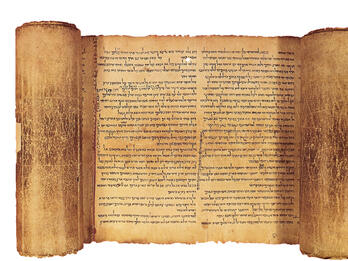
Isaiah Scroll
Isaiah Scroll, Qumran, ca. 125 BCE (Hellenistic Period). This is the longest of the Dead Sea Scrolls and the only scroll from the Qumran caves to be preserved in its entirety. It varies in more than 2…
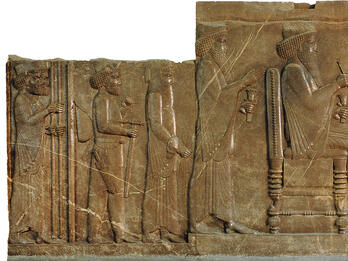
Darius and Xerxes, Kings of Persia
Darius and Xerxes, Kings of Persia. Darius I (reigned 522–486 BCE) is seated on his throne, and his successor, Xerxes (reigned 486–465 BCE), stands behind him. The Bible refers to these kings several…
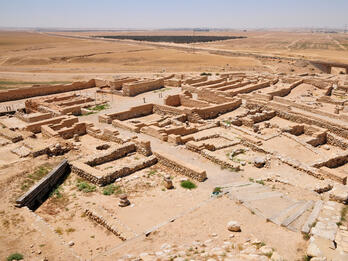
City Square and Gatehouse, Beersheba
City square and gatehouse, Beersheba. The foundations of the gate’s chambers are visible at the upper left of the square. Squares just inside or outside of city gates were places of public gathering…
If we sang praises to the Lord
If we sang praises to the Lord
Every day with as much care
As He takes in giving us joy
And in showing His favor in every part of our lives,
Then our suffering would not be relentless
And no great…
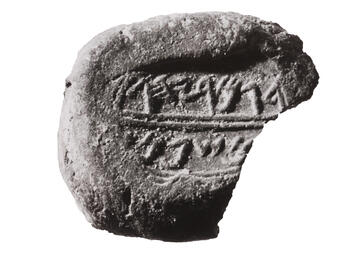
Bulla of Gemaryahu son of Shaphan
Bulla of Gemaryahu son of Shaphan, Jerusalem (City of David), late 7th or early 6th century BCE. This clay seal impression belonged to Gemaryahu, who was likely the scribe Gemariah son of Shaphan…



